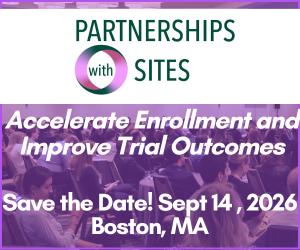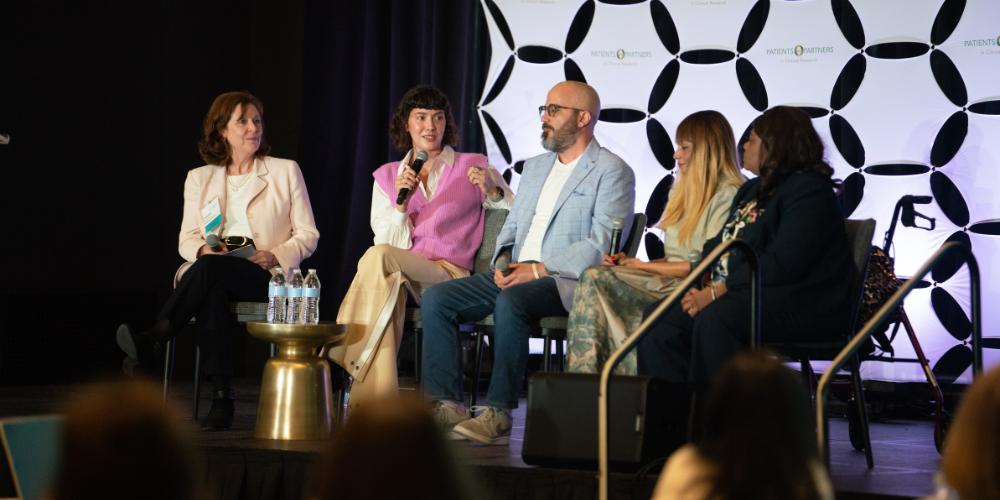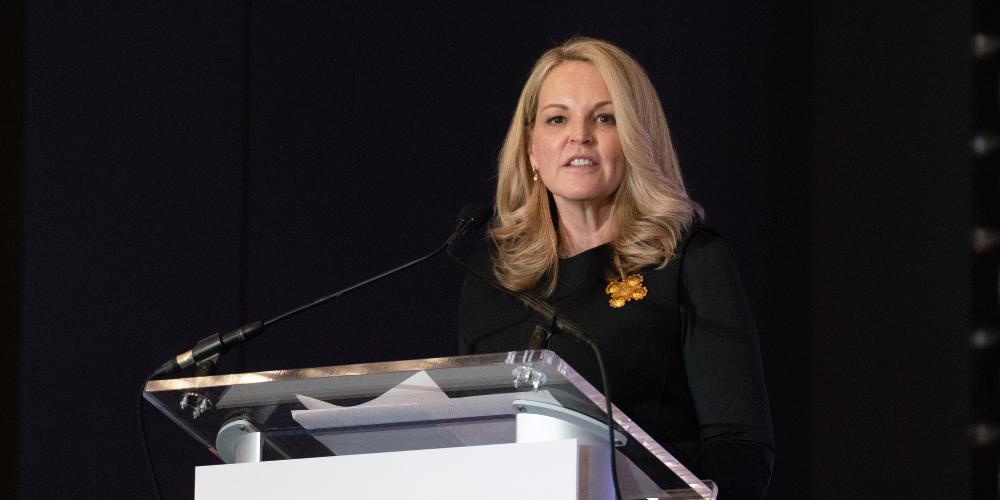How Pfizer Is Tackling Patient Insight Continuity Across a Global Organization
Gathering and implementing patient insights across a global organization reduces inefficiency and ensures that the patient voice is consistently embedded in medicine development. Stephanie Christopher, Patient Engagement Lead, R&D, Pfizer, tells us how she and her colleagues are tackling the issue to make sure that valuable patient feedback is recorded, accessible and usable.

What was the challenge that you saw at Pfizer that you wanted to address?
The challenge was creating continuity in patient insights given the scope and scale of the organization itself. How do we do it in a way that informs the whole product life cycle end-to-end while acknowledging the ways of working at Pfizer in a large, complex organization? And with Pfizer’s goal to touch one billion lives a year, we know that integrating patient insights into the total product lifecycle is important, and that it has to align with study timelines.
Everyone at Pfizer is committed to bringing breakthroughs to patients, and there's lots of different functions and roles dedicated to working with patients to accomplish this. The challenge was that all of these functions may not actually get a chance to connect with each other, even if they're working in the same therapeutic area. Great insights may get collected and acted upon by one team at a given point in the product life cycle, but the insights aren't consistently being carried across or shared to the teams that are working on that same product in a later phase.
What was the impetus for actually making changes to address these challenges?
There was a greater recognition that the ways we are working now need continuous improvement. I sit in the clinical development and operations team, and our team is one of many across the organization that seeks patient insights to support drug and vaccine development. Teams like ours would work to put together an ad board or engagement strategy, only to find out in the middle of it that another team has done similar work that could have informed the strategy and we just weren’t aware of it.
We also saw inconsistencies about the timepoints that patient insights were being done. Some of the teams were great about engaging patients early on in the process. Others didn't think about it until later and might miss their chance to do meaningful insights in time. On top of that, there are different ways of working with patients and different norms based on different therapeutic areas. All of this leads to inconsistencies in the process and missed opportunities.
What can you tell us about how you have collected insights thus far?
The first thing we did was create a resource repository, which is a very concise internal resource for anybody who has an interest in patient insights. It addresses, “What are the things you need to know to get started? What are the policies, procedures, and regulatory guidelines you need to be aware of? What are some best practices?”
"We understand that having the tools is not enough. You have to teach people how to do it and you have to give them the ability to navigate what already exists."
You mentioned leveraging AI to share access to insights. What can you tell us about that?
One of the ways we're doing that is we have a great digital team looking to see how we can use tools like AI across the organization, not just within the world of patient insights. Specifically to support patient insights, we’ve built a tool to help us search and summarize past patient insights in an anonymous and de-identified way that we’ve collected across the organization. Now we're working on taking it to the next step, which is figuring out how to scale it and make it something that teams can integrate into their workflows. The challenge with the tool is that we have to find and ingest the patient insights data somehow. We have to find the data in all these different places across the organization, and tell those stakeholders who have created those insights, “I’ve got this tool, can you upload whatever you have into it?” It creates another step in their process.
"Instead of thinking about putting all the patient insights data from across the organization in one big data silo, we are working to connect the silos and layer those AI tools on top of them to search through those insights."
It’s a work in progress, and might always be a work in progress. But we’ve recognized that these are where the silos are, and this is how we can meaningfully pull data from them. That helps to solve the problem of putting these amazing insights to use.
What is the ultimate goal?
The goal is to make this enterprise-wide. Some of these pilot tests or tool tests have focused in certain therapeutic areas or within certain parts of the organization. One difficult gap to bridge is between R&D insights and commercial insights. Part of that is different terminology, because the patient insights I’m collecting on an ad board in R&D use terms like “clinical trial participants” while my colleagues in commercial are doing focus groups and using terms like “consumers.” And beyond that, there are some firewalls in the organization between commercial and R&D, which is very understandable, as the purpose and audience for insights collected by R&D teams, can be very different and governed by different rules and requirements than those collected by commercial teams.
We are building those parameters into the AI tools, so that if I do a search on patient insights as someone in R&D, it’s only searching for things that I should have access to.
What is the timeline and the future plans?
There has been an awareness of these challenges for several years and there have been smaller initiatives to work through some of the challenges, but this larger, end-to-end effort across R&D has come about in the last year and is still very much a work in progress.
The current plans are to envision what this might look like and simultaneously build out the business cases for it. We are showing, conceptually, what the AI platform is, because there will be a cost to build it, and identify where we can integrate into the business and what the timing of that would be.
How are you approaching generating and utilizing metrics to show value and progress?
We are figuring out metrics, as they are helpful in building the business case for why obtaining patient insights are important, and can also be a tool to elevate to leadership the awareness of the importance of these tools and the impact they're making.
We’re also building in the governance checks. We know that one of the challenges we face is that teams will say, “This is great, we should do this,” but then won’t actually reach out to the patient insights teams that can support them in gathering insights until it’s too late in the process. We would like to build this step into the governance structure of how protocols get developed at Pfizer, such as “Six months out, you should be thinking about patient insights. Here’s who to contact.” That, combined with insights that show impact, help us to make the case as to why you need to plug us into the process.
How have you changed your communication style about the value and business impact of patient insights now that you are in a large, global organization?
You have to talk to others about this work in terms of impact to the organization's larger goals, specifically that it’s not a “nice to have,” but something that will help us in our goals to accelerate recruitment, reduce protocol amendments, and ultimately impact patients’ lives by developing treatments and vaccines to the patients that need them faster.
Additionally, more and more regulatory agencies are asking sponsors how we involve the community in our clinical trial decision-making and the materials we use to communicate. Being able to show that regulatory authorities are asking about this shows that this is not something that’s going to go away, not just because it helps us incorporate the patient voice into our study design and execution activities, but also because it’s the regulatory expectation.
Ultimately, if we get this right, we believe that we will be able to meaningfully incorporate the patient perspective across all the treatments and vaccines that we are developing.









